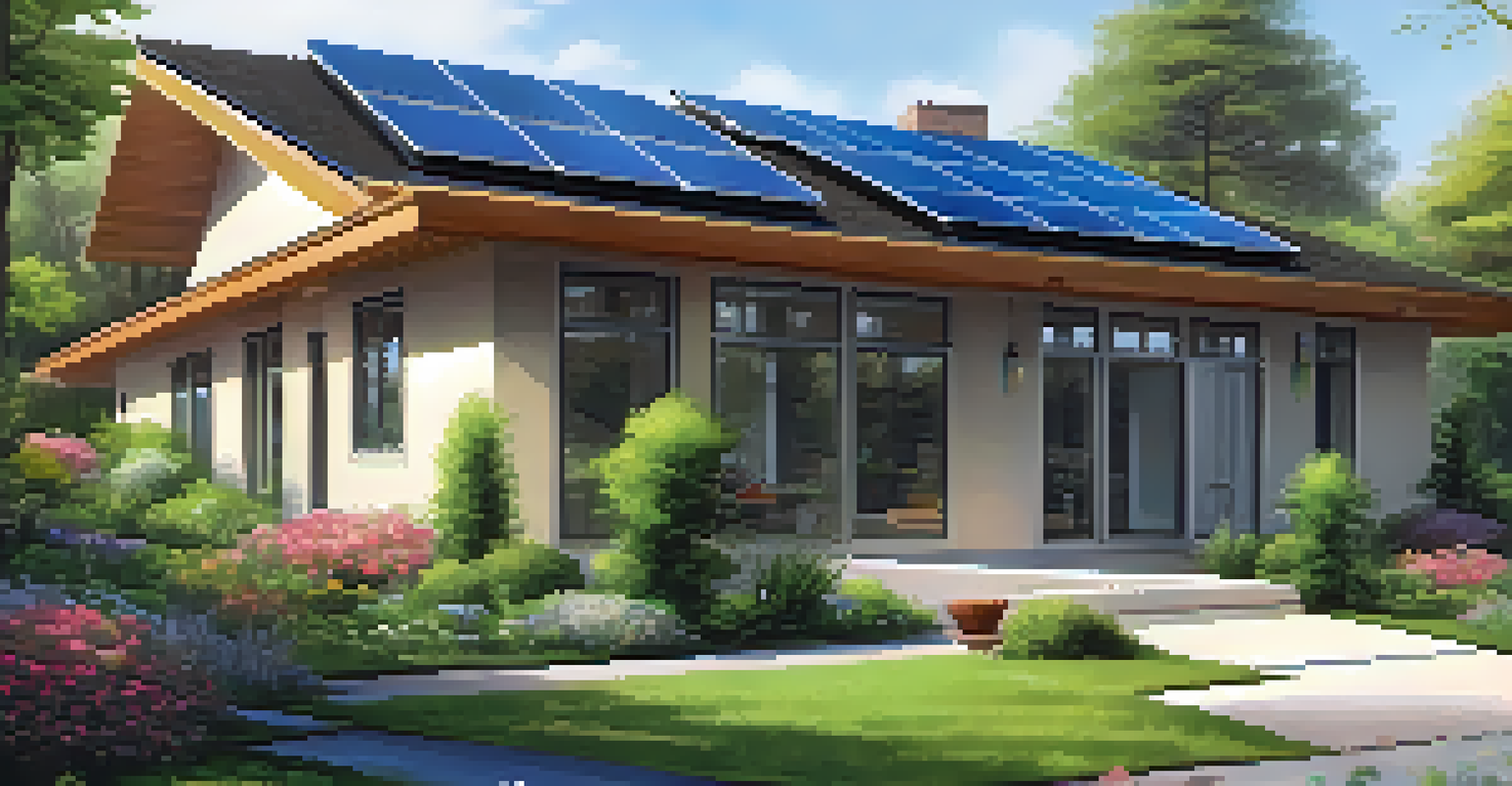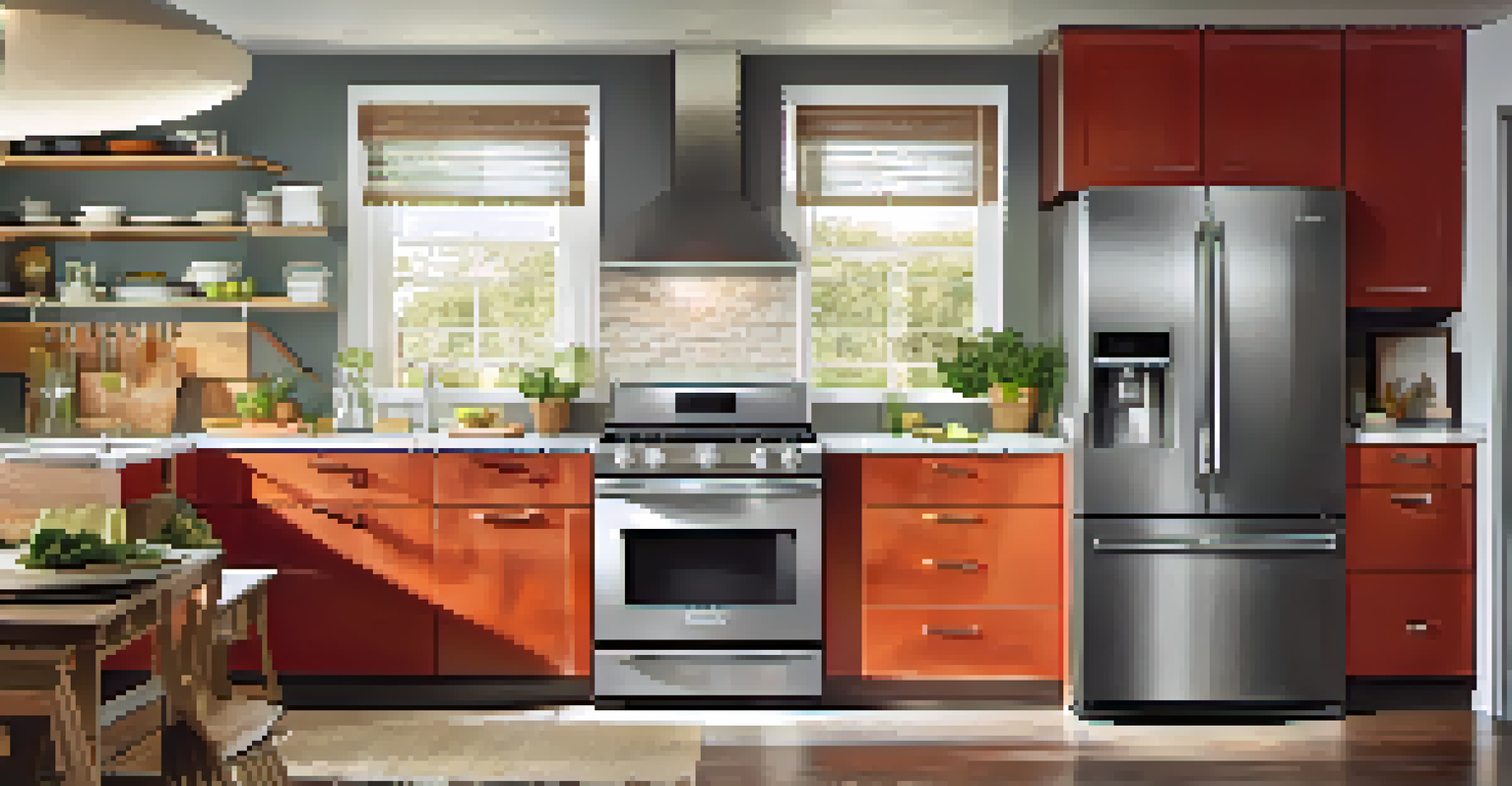Enhancing Home Comfort with Energy-Efficient Improvements

Understanding Energy Efficiency in Your Home
Energy efficiency refers to using less energy to provide the same service. For example, swapping out traditional light bulbs for LED ones can significantly reduce electricity consumption without sacrificing brightness. Understanding this concept is essential in making informed decisions about home improvements.
Energy efficiency is not just a policy choice but a common sense approach to saving money and creating a better environment.
When we think of energy efficiency, we often picture high-tech gadgets or solar panels. However, it’s much broader and encompasses everyday choices that can enhance comfort and reduce utility bills. From insulation to appliances, each decision can contribute to a more efficient home.
Ultimately, energy efficiency not only helps the environment but also improves your living space. By creating a comfortable atmosphere, you can enjoy your home more while knowing you're making responsible choices.
The Importance of Proper Insulation
Insulation acts as a barrier, keeping warm air inside during winter and cool air during summer. Think of it as a cozy blanket that wraps around your home, ensuring that your heating and cooling systems don’t have to work harder than necessary. Good insulation can significantly impact your comfort and energy bills.

Inadequate insulation can lead to drafts, making your home feel chilly and forcing your heater to work overtime. This not only affects your comfort but can also lead to increased energy costs. Properly insulating your attic, walls, and floors can help maintain a consistent temperature throughout your home.
Boost Comfort with Proper Insulation
Good insulation keeps your home cozy and lowers energy bills by preventing drafts.
Investing in quality insulation is a step towards a more energy-efficient home. Whether you choose foam, fiberglass, or cellulose, each material offers unique benefits that can enhance your living experience while saving you money.
Upgrading to Energy-Efficient Windows
Windows play a crucial role in your home’s energy efficiency. Old, single-pane windows can let in drafts and allow heat to escape, making your home less comfortable. Energy-efficient windows, like double or triple-glazed options, provide better insulation and help regulate indoor temperatures.
The greatest threat to our planet is the belief that someone else will save it.
Additionally, energy-efficient windows often come with low-emissivity (low-E) coatings that reflect heat back into the room during winter and keep it out during summer. This means your heating and cooling systems won’t have to work as hard, leading to lower energy bills and a more comfortable environment.
While the initial investment in new windows may seem daunting, the long-term savings and comfort benefits make it worthwhile. Plus, many energy-efficient windows come with warranties, ensuring your investment is protected.
Choosing Energy-Efficient Appliances
When it comes to appliances, energy efficiency is key. Look for appliances with the ENERGY STAR label, which signifies that they meet strict energy efficiency guidelines set by the EPA. These appliances not only use less energy but often perform better than their standard counterparts.
For example, an energy-efficient refrigerator can save you a significant amount on your electricity bill while providing the same storage capacity. Similarly, washing machines and dishwashers designed for efficiency can reduce water usage, making them both eco-friendly and cost-effective.
Upgrade to Energy-Efficient Windows
Investing in energy-efficient windows helps regulate indoor temperatures and reduces heating and cooling costs.
Switching to energy-efficient appliances is a simple way to enhance your home comfort. Not only will you enjoy lower utility bills, but you’ll also contribute to a more sustainable future.
The Role of Smart Home Technology
Smart home technology has revolutionized how we manage our living spaces. Devices like smart thermostats allow you to control your home’s temperature from anywhere, optimizing energy use based on your schedule. This ensures your home is comfortable when you’re there while minimizing energy waste when you’re not.
Additionally, smart lighting systems can adjust brightness based on natural light levels, helping you save energy while keeping your home cozy. By integrating these technologies, you can create a more personalized and efficient living environment that meets your comfort needs.
Investing in smart home technology is not just about convenience; it's about enhancing your quality of life. With the right devices, you can enjoy a more comfortable home while being mindful of energy consumption.
Implementing Efficient Heating and Cooling Systems
Heating and cooling systems are often the largest energy consumers in a home. Upgrading to energy-efficient systems, like a high-efficiency furnace or a heat pump, can significantly reduce energy usage while maintaining a comfortable indoor climate. These systems are designed to provide optimal performance with lower energy costs.
Regular maintenance is also crucial for ensuring your heating and cooling systems operate efficiently. Simple tasks like cleaning filters and scheduling annual tune-ups can improve airflow and system performance, ensuring your home stays comfortable year-round.
Embrace Smart Home Technology
Smart home devices optimize energy use and enhance comfort by allowing you to control your environment effortlessly.
Ultimately, the right heating and cooling systems can make a substantial difference in both comfort and energy savings. It’s an investment that pays off in the long run, keeping your home cozy while cutting down on costs.
Using Renewable Energy Sources
Integrating renewable energy sources, such as solar panels, can drastically improve your home’s energy efficiency. Solar energy harnesses the sun’s power to generate electricity, reducing reliance on fossil fuels and lowering utility bills. Imagine generating your own energy while contributing to a cleaner environment!
Additionally, many states offer incentives for homeowners who invest in renewable energy systems, making it more affordable than ever. This can include tax credits, rebates, or even grants to offset the initial investment, making it a smart financial decision.

Ultimately, embracing renewable energy is a step towards a sustainable future. By reducing your carbon footprint and increasing energy independence, you create a more comfortable home while contributing to a healthier planet.
Creating a Comfortable Indoor Environment
Beyond energy efficiency, creating a comfortable indoor environment involves more than just temperature control. Factors like humidity, air quality, and lighting also play vital roles in your home’s overall comfort. For instance, a dehumidifier can help maintain optimal humidity levels, making your home feel cooler during hot months.
Investing in indoor plants can improve air quality and create a more inviting atmosphere. Plants not only add color and life to your space but also filter toxins from the air, contributing to a healthier living environment.
Finally, consider your home’s aesthetics and layout. Thoughtful design choices, like furniture arrangement and color schemes, can enhance comfort and make your space feel more welcoming. By focusing on both energy efficiency and design, you can create a home that truly embodies comfort.